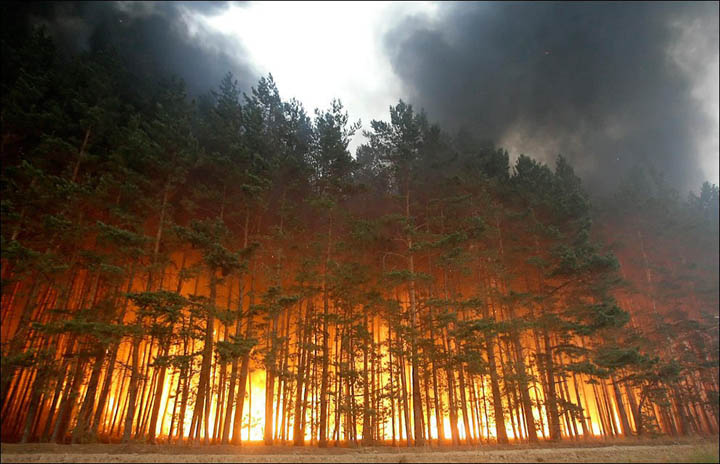Red sun in the morning
Wheels on fire
Rolling down the road
- the Band
- the Band
I have only one burning desire
Let me stand next to your fire
-Jimi Hendrix
Let me stand next to your fire
-Jimi Hendrix
Greetings
You've probably noticed that the smoke from Siberia has given us some pretty spectacular sun rises and sunsets. Here's some pretty amazing shots of the burning.. From here
“The Dry Land Burned Like Grass” — Siberia’s Road to a Permaburn Hell
(Residents of the Trans Baikal region of Russia flee through a raging permafrost fire on April 13 of 2015. Video Source: The Road to Hell Recorded by: Vladislav Igorevich.)
The script reads like a scene from some post-apocalyptic disaster film.
Frigid Siberia begins an epic thaw — a thaw set off by an unstoppable dumping of heat-trapping gasses into the atmosphere by human fossil fuel industry. Finally, after years of warming, the thawing land itself becomes fuel for fires. A thick layer of peat-like organic material that serves as kindling to the heat-dried trees and grasses atop it.
Immense blazes ignite in April — fully 100 days before the usual fire season in late July. The fires explode to enormous size, doubling in area in less than a day, covering scores to hundreds of square miles. Residents flee or face off against walls of raging flame in bucket and hose brigades. Military units descend on the regions affected to fight blazes and prevent looting. The fires are freakish, starting from nowhere at a moment’s notice. Eyewitnesses at the scene of one fire describe the surreal situation saying: “… the dry land burned like grass.”
(A wall of fire confronts residents of Chita, Russia this week as local townsfolk prepared to defend their homes and livelihoods from the inferno. Image source: The Siberian Times.)
But for two regions of Russia, that’s exactly what happened this week.
In Khakassia, a region of southern Siberia bordering Kazakhstan and Mongolia, massive blazes ripped through a broad permafrost thaw zone, impacting 39 villages, killing 29 people and leaving thousands homeless. By Thursday, many of these massive fires were finally extinguished — leaving miles wide scars over a smoldering and blackened land.
Hundreds of miles away in Trans Baikal, the story was also one of hellish inferno. There, wildfires erupted from the thawing permafrost zone — engulfing forests, burning dry land, destroying hundreds of homes in more than 9 villages, and killing four people. One wildfire alone surged to nearly 400 square miles in size and threatened numerous settlements near the city of Chita. There, locals are still fighting the blaze in a desperate effort to preserve life and property.
(Satellite image of fires and large burn scars in Chita, Russia on April 17 of 2015. For reference, bottom edge of frame is 120 miles. Note that some of the burn scars in this satellite shot stretch for 20 miles at their widest point. Image source: LANCE MODIS.)
In total, nearly 50 villages and towns have now been affected, 33 lives have been lost, four more have gone missing, nearly 7,000 people are now homeless, and more than 6,000 domestic animals have been lost to the fires. These are the first, early casualties in a fire season stoked by climate change that will flare off and on for at least the next five months. A fire season that will likely see immense plumes of smoke covering broad sections of the Northern Hemisphere, involve Canadian and Alaskan permafrost zones, and see wildfires burning all the way through Siberia to the shores of the Arctic Ocean.
And so we are just at the start of a long road through another hellish Arctic fire season, one enabled and made far, far worse by a current and very rapid rate of human-forced warming.
Links:
Hat tip to Alexander Ac
Labels: climate, fire, robertscribbler, siberia, sunrise
posted by Walter @ 2:09 PM
0 Comments
![]()



0 Comments:
Post a Comment
Subscribe to Post Comments [Atom]
<< Home